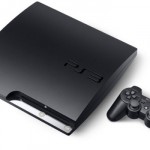MTN South Africa has once again emerged as the country’s top-performing mobile network, securing the highest score in the Q2 2025 MyBroadband Network Quality…
Netsurfer Dual Tablet review: thrifty Android goodness
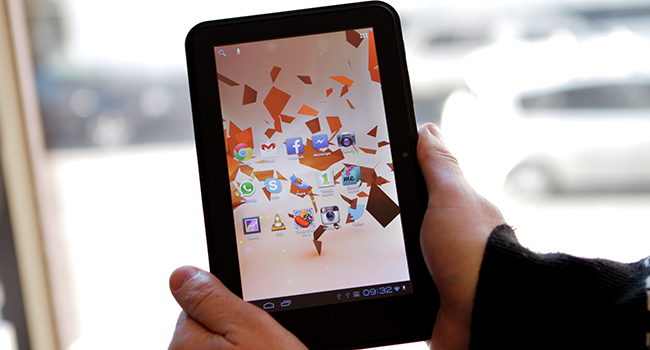

Change is a constant in the gadget world. Devices get larger and thinner, operating system become more user-friendly and our wallets become just a little lighter ever year. It’s the low-cost, high-concept gadgets that pique our interests the most though, like the new Netsurfer Dual Tablet from South African-based FutureMobileTechnology (FMT). For just under R2 000 (US$200), the Dual represents value for money in a lean 7-inch tablet that packs a lot of muscle under its belt.
It’s not the fastest tablet ever made, or the best looking device you’ll ever see, but it’s inexpensive, has a decent screen and — if it performs well enough (the last version practically sold out in weeks) — warrants a purchase for any Android fan. For the user who’s new to the tablet game, or the mobile device sphere in general, the Dual is practically a must-buy, and here’s why:
Look and feel
The Dual is shockingly rugged and pleasingly chunky. It weighs 320g and is 190mm in length, 120.5mm in height and 11.5mm thin. The case is plastic, with a dimpled rear that feel great to hold, especially for a tablet that’s going to spend a lot of time in your hands. Designers often overlook this small fact, as even the ultra-expensive Sony Xperia Tablet Z feels sharp and cold when held for too long. What we have here is a R2 000 tablet that feels better than a R7 000 one. It is of course smaller and lighter, but the feel-good design of the Dual endears me to it.
Other design decisions that factor positively for the Dual includes the chunky plastic latches that cover the dual-sim slots. Yes, it’s a dual-sim device and as South Africa’s considered an emerging market for tech, dual-sim is a must. Dual-sim means double the coverage in a country where the wireless cloud has yet to penetrate the mainstream. Outside of that, there’s a power and volume key, an SD card slot (up to 32GB as the box proudly boasts), a microUSB port, a miniHD jack and a spot for the 3.5mm headphones that are thankfully included with the package. FMT also throws in a miniHD to female USB convertor, so most flash drives — the ones recognized by Android — will work with the Dual. It’s a nice touch, especially for first time users who want to watch content on their device but are unsure of how to stream movies, music and pictures.
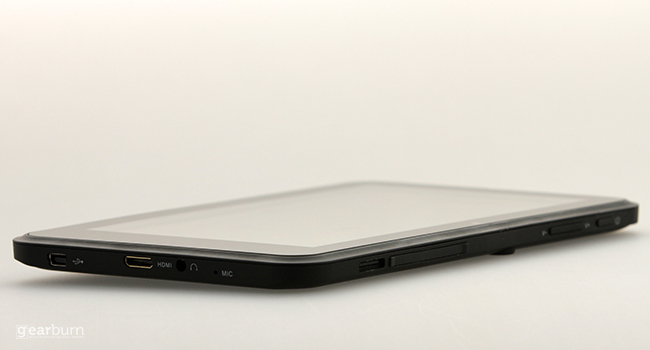
Overall it’s a solidly designed tablet but it doesn’t have the sheen of the other 7-inchers: the microSD card slot for instance bleeds light from the display. It’s bright enough to be noticeable and reeks of poor design. It also makes me fear accidental spills and I fear that accidentally dropping liquids on the tablet would cause it harm. It would have also been great if a miniHD cable could have been included in the total package as these suckers can easily set one back R130.
The 7-inch, 1024×600 display won’t win any awards yet content looks fine if not excellent in most cases. Testing content is easy, thanks to patent-pending Adventure Time test. Upload an HD episode to the device, play it and if it looks good, the device passes. Copying took a while as it’s USB 2.0 so it loses points there. The episode itself looked fine, but the Dual has to be held at a certain angle to get the best image quality. As in, straight on or the tablet looks washed out.
Hardware
Well now. The hardware inside the Netsurfer isn’t going to impress, or win any awards, or be thanked for “being awesome.” This is a straight up tablet with very little in the way of gimmicky hardware. There’s a dual-core 1GHZ CPU, 1GB RAM (same as the iPad 3), there’s a dual-sim slot, a microSD port, mini-HDMI, a microphone, a microUSB port, a reset button for emergencies, a 2-megapixel rear and 0.3 (VGA) camera on the front. I said it wasn’t the fastest Android device ever and here’s some proof for you. The tablet is only as fast as the close to three-year old Galaxy Nexus. Or if you’re a glass half-full kind of geek, the Netsurfer Dual is faster than the Kindle Fire.
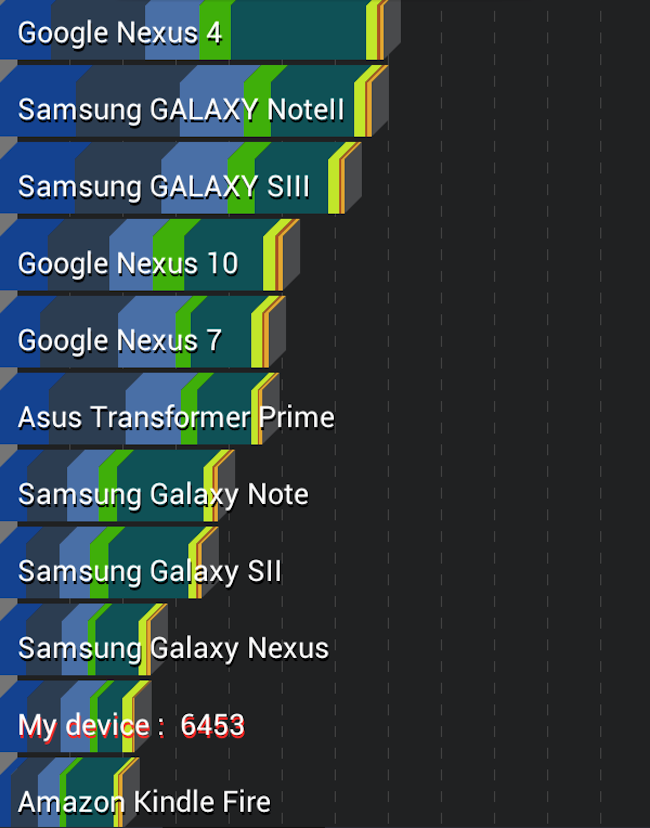
Still, I have an issue when games like Candy Crush Saga run like a boat in choppy waters. The game may be simple, but is graphically intense and requires a decent tablet to run smoothly. It went like this for most games. In regards to games, some ran like a dream (Angry Birds Star Wars) and others hobbled to a crawl (GTA: Vice City). I wouldn’t recommend playing games on the Dual though, as it’ll most likely drain the battery like an energy vampire.
The same issue I had with the older model, I have with the Dual. The 3100mAh battery may be awesome in a smartphone, but it’s a wasted opportunity here. Under heavy usage, I watched the battery slowly drain in front of my eyes. I almost managed a full two-hour marathon of Family Guy before the Dual gave out on me. When it comes to just shooting the breeze on the internet though, battery life is almost doubled. My suggestion is to never, ever leave home without your USB charging cable. On the subject of charging, the battery takes roughly five times longer to charge then it does to actually drain. So you find yourself in a constant cycle of using the tablet then worrying about the blinking red charging icon as the Dual slowly drains of its precious life.
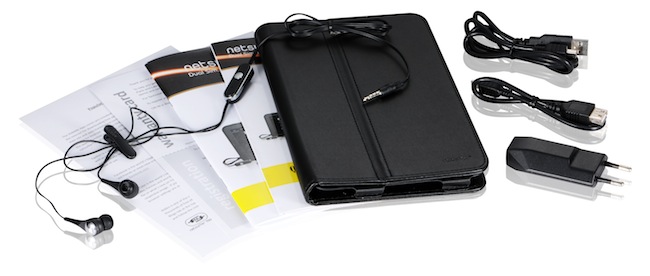
There’s a good amount of extra’s that come for free with the Dual. Pictured above is what’s in the box: a headset (which we suggest using if you want to make a phone call), a USB power adaptor, a leather case, a microUSB cable and a MicroUSB to Female-USB Cable. These extras are great, especially the power adaptor which can charge practically any USB device.
The stereo sound is surprisingly decent and given how easy it is to plop content onto the Dual (drag and drop), it becomes a highly robust media player when paired with the included, leather kickstand. If you’re going to use the Dual to watch video, I’d recommend a decent bluetooth headset at the very least. The included earphones just didn’t do it for me.
The dual-sim setup works very well. I placed two sim-cards into the tablet, booted it up and it detected both networks. Swapping between each sim was a breeze but actually, physically inserting the sim-cards is a chore. Why must cheaper devices have such shoddy card slots? At least Apple has the foresight to include a paperclip with its products.
The Dual’s a competent tablet though. For the market it’s aimed at, the sub-par hardware will do just fine. I just keep getting reminding that this is a R2000 tablet every time it crashes during a game of emulated Super Mario Bros. 3.
The OS
I’ll get this out of the way first: there’s no Google Play Market and that’s kind of alright. FMT includes the very competent 1Mobile and SlideMe markets. Between these two, every app I wanted was available. The SlideMe market even has an edge on Google’s as it, in my opinion, has a friendlier design. I was initially put off by the lack of the Play Store, but as I quickly filled the Dual with my standard suit of apps (pictured below), the Play Store-sized hole in my life quickly filled up.
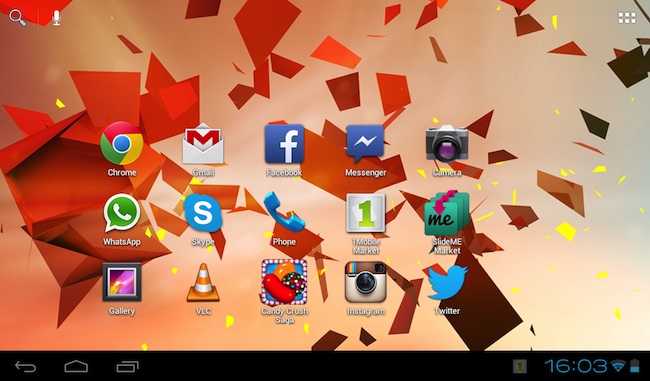
The Dual runs Android 4.0.4, which for people who’ve been raised on Android 4.2.2 would seem like a major step backwards and in a way it is. I miss Project Butter the most, a slight upgrade to the interface that literally made screen transitions as smooth as butter. It’s sorely missed here. Outside of that, it looks and feels like every other Android device ever made, with the exception of the Sony Xperia Z Tablet which is the best version of Jelly Bean yet.
FMT has even gone as far as to include a “Shop” icon in the top-right corner of the app screen. It was at first redundant, but knowing that there’s a quick shortcut to the Android store which can be accessed practically instantly is a major boon. And knowing is half the battle.
The whole affair feels quick and dirty, but I like it. This is a very unpretentious version of Android — it’s not clean and default like it is on the Nexus, but it’s close enough not to matter to all expect those with the most discerning eye.
Conclusion:
FMT’s Netsurfer Dual is a fantastic choice for the geek-in-training. It’s a proudly South African tablet that you’ll be happy to own, thanks in no small part to the R2 000 price. While it may not be the fastest tablet of all time, it does what it sets out to do, and that’s to somehow get every citizen in SA hooked onto Android. Just be warned, battery life is well-below acceptable so if you’re looking for a tablet with more stamina, the Dual may not wet your whistle. But then I go back to that price again. For R2000, the Dual does more than the Kindle Fire, and performs just as well as the Nexus 7. It’s worth every cent of that very respectable price therefore I can only sing its praises. Let’s hope the rest of Africa’s tablet offerings are as decent as the Netsurfer Dual.
Verdict: 8/10
Visit Future Mobile Technology’s site for more info on the Dual, or you can purchase it directly from PepCELL (in-store).

